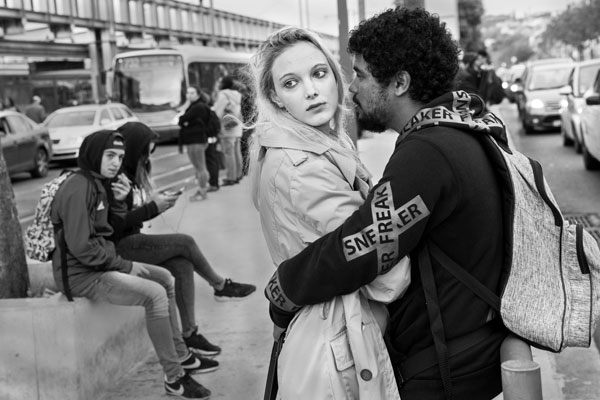The Definitive Guide for Framing Streets
Table of ContentsGetting My Framing Streets To Work8 Easy Facts About Framing Streets DescribedSome Known Facts About Framing Streets.Framing Streets Things To Know Before You BuyThe 30-Second Trick For Framing StreetsNot known Factual Statements About Framing Streets
Digital photography style "Crufts Pet dog Show 1968" by Tony Ray-Jones Road photography (also sometimes called honest digital photography) is photography conducted for art or questions that features unmediated chance encounters and random incidents within public locations, usually with the aim of catching images at a definitive or emotional minute by careful framing and timing. 
Subsequently his boots and legs were well defined, but he is without body or head, due to the fact that these remained in motion." Charles Ngre, waterseller Charles Ngre. https://framingstreets1.carrd.co/ was the first photographer to obtain the technical elegance needed to sign up people in motion on the road in Paris in 1851. Photographer John Thomson, a Scotsman working with reporter and social protestor Adolphe Smith, released Street Life in London in twelve regular monthly installments beginning in February 1877
The 7-Minute Rule for Framing Streets
Eugene Atget is considered as a progenitor, not due to the fact that he was the very first of his kind, yet as a result of the popularisation in the late 1920s of his document of Parisian roads by Berenice Abbott, that was motivated to undertake a comparable documents of New york city City. [] As the city established, Atget assisted to advertise Parisian streets as a deserving subject for photography.

More About Framing Streets
Martin is the very first recorded digital photographer to do so in London with a disguised camera. Mass-Observation was a social research study organisation established in 1937 which aimed to videotape everyday life in Britain and to tape the responses of the 'man-in-the-street' to King Edward VIII's abdication in 1936 to marry separation Wallis Simpson, and the sequence of George VI. The chief Mass-Observationists were anthropologist Tom Harrisson in Bolton and poet Charles Madge in London, and their very first record was created as the publication "May the Twelfth: Mass-Observation Day-Surveys 1937 by over two hundred observers" [] Home window cleaner at Kottbusser Tor, Berlin, by Elsa Thiemann c. 1946 The post-war French Humanist Institution photographers located their topics on the road or in the bistro. Andre Kertesz.'s widely admired Images la Sauvette (1952) (the English-language edition was titled The Crucial Moment) promoted the idea of taking an image at what he termed the "definitive moment"; "when type and web content, vision and composition combined into a transcendent whole" - 50mm street photography.
Framing Streets Fundamentals Explained
The recording device was 'a covert camera', a 35 mm Contax hidden underneath his coat, that was 'strapped to the upper body and attached to a long cord strung down the appropriate sleeve'. Nonetheless, his work had little modern effect as due to Evans' sensitivities concerning the originality of his task and the privacy of his subjects, it was not published till 1966, in the book Numerous Are Called, with an introduction composed by James Agee in 1940.
Helen Levitt, then an educator of kids, connected with Evans in 193839. She documented the temporal chalk drawings - Street photography that belonged to youngsters's street culture in New york city at the time, as well this page as the children who made them. In July 1939, Mo, MA's brand-new photography section consisted of Levitt's job in its inaugural exhibitionRobert Frank's 1958 book,, was substantial; raw and typically out of emphasis, Frank's photos examined mainstream photography of the time, "tested all the official regulations laid down by Henri Cartier-Bresson and Pedestrian Evans" and "contradicted the wholesome pictorialism and heartfelt photojournalism of American magazines like LIFE and Time".